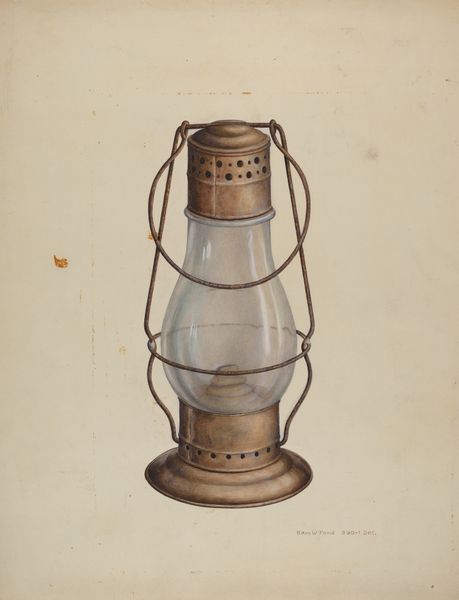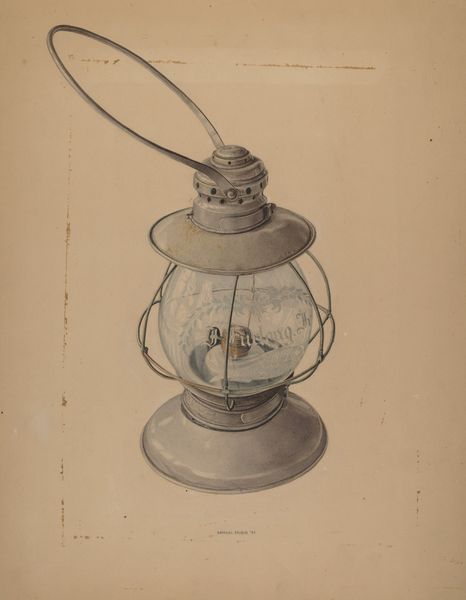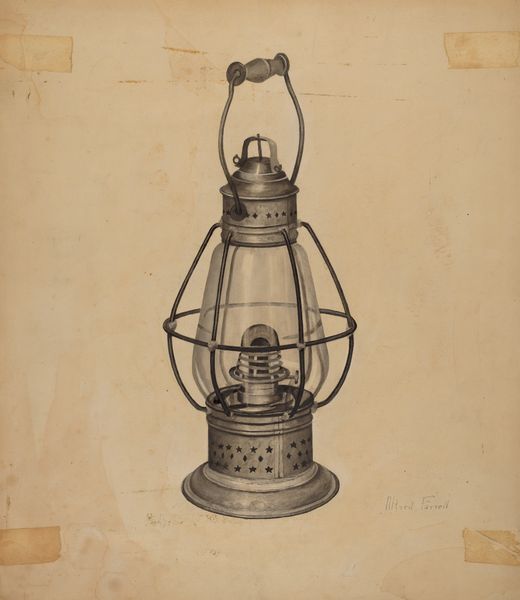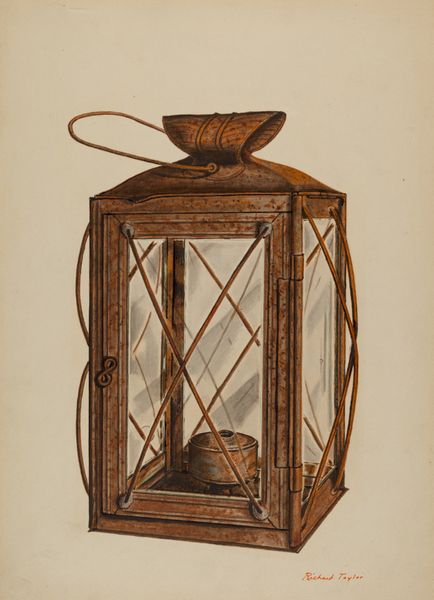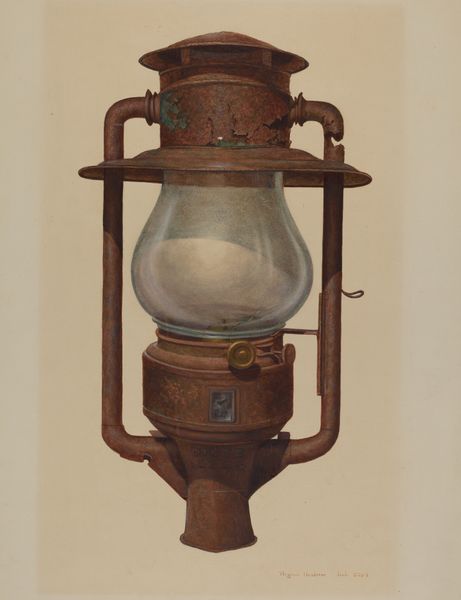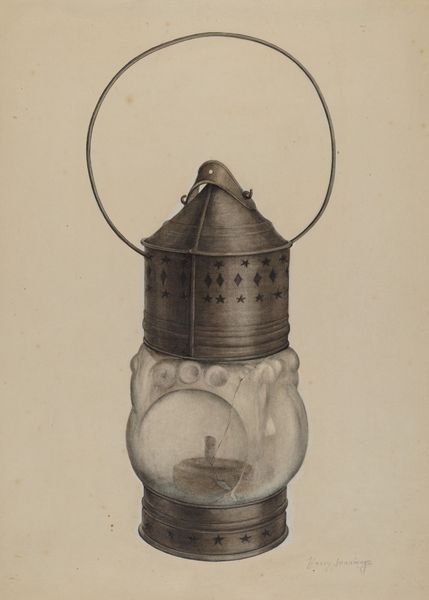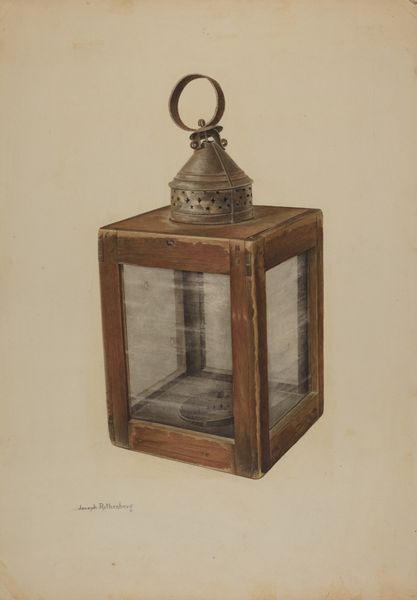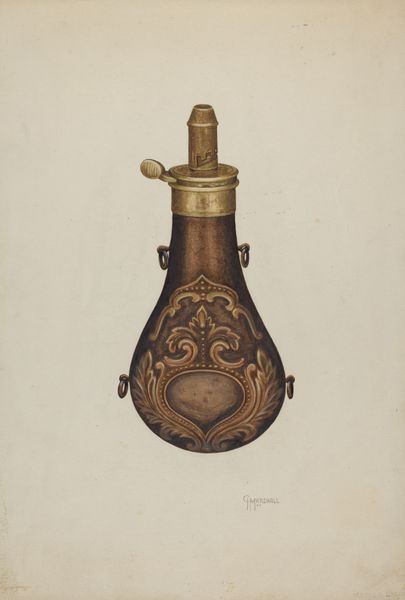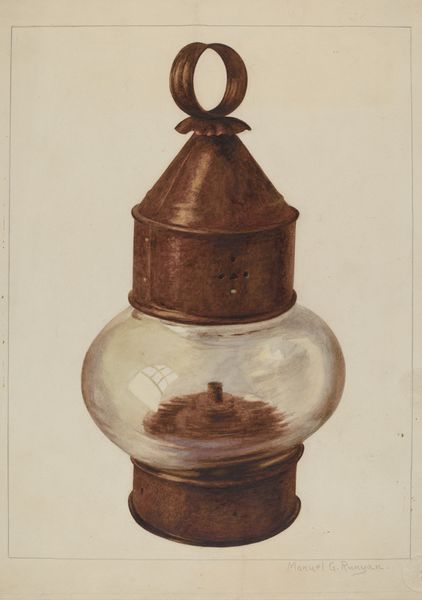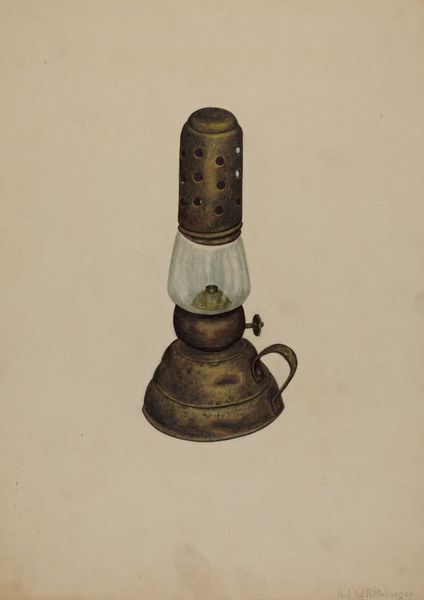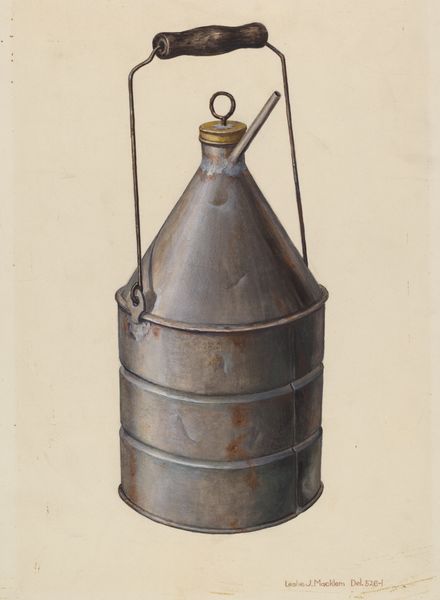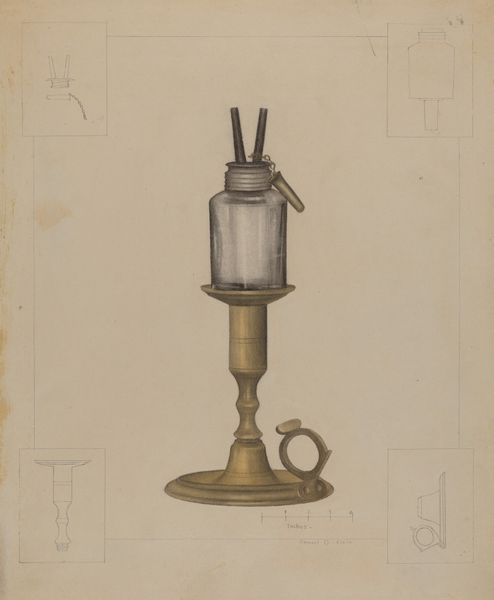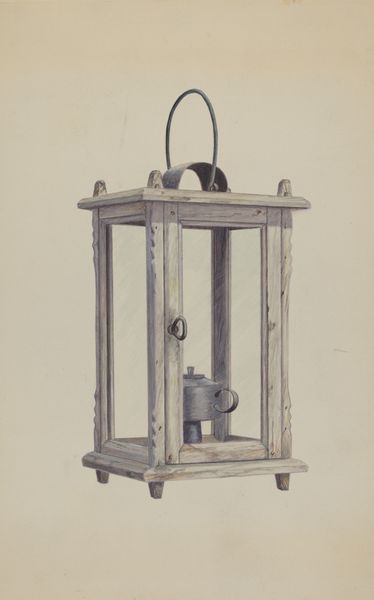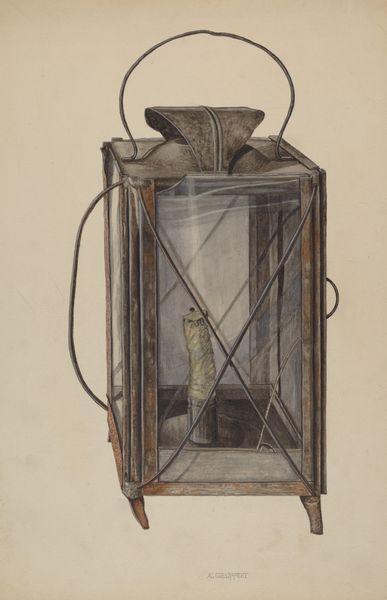
drawing, paper, watercolor, ink
#
drawing
#
sculpture
#
charcoal drawing
#
paper
#
watercolor
#
ink
#
charcoal
#
graphite
#
watercolor
Dimensions: overall: 35.5 x 28.1 cm (14 x 11 1/16 in.) Original IAD Object: 11" high; 4 3/4" wide
Copyright: National Gallery of Art: CC0 1.0
Editor: So, this is Albert Eyth's "Lantern" from around 1937, done with watercolor, ink, charcoal, graphite and paper. It's incredibly detailed. The way the artist captured the worn metal really jumps out. How would you read this piece? Curator: It's tempting to just see a functional object, but as a materialist, I think about its making. The various materials – ink, watercolor, charcoal – each contribute to representing the lantern's diverse material makeup of glass and aged metal. This combination suggests both the precarity and resourcefulness inherent in everyday life. Editor: Precarity? What do you mean? Curator: Well, think about what a lantern signifies – illumination in darkness. The artist is presenting this image during the interwar period, a time when electricity was not necessarily readily available or affordable to all; in a world increasingly lit by electric power, we can ask if a lantern signifies either backwardness or self-sufficiency. In a sense, this is a commentary on the economic conditions. Editor: I see. The lantern as a stand-in for the challenges and resourcefulness of working class life at that time? The level of detail does elevate what might be dismissed as a simple, utilitarian object. Curator: Exactly. And think about the labor involved in creating this image. Each material demands a different technique. What kind of work is valued at this time? Is it different between those who work with their hands versus their mind? The work encourages us to question our understanding of the hierarchies that we see within art, design, and also broader aspects of culture and society. Editor: That's a fascinating way to consider this image. I was drawn to its realism, but I missed the broader social commentary embedded in its materials and subject. Curator: Art often hides in plain sight. Examining the means of production opens up so many layers of meaning. It gives an alternate consideration beyond traditional interpretations and approaches to analyzing and perceiving an art work.
Comments
No comments
Be the first to comment and join the conversation on the ultimate creative platform.
